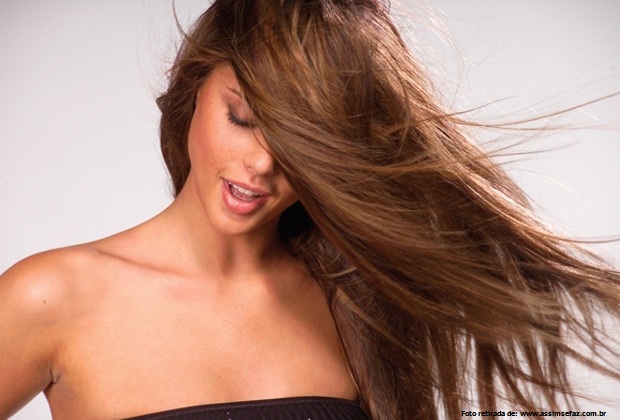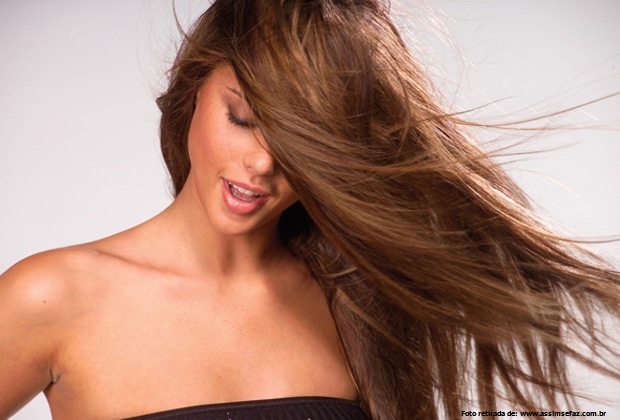No matter the season, the weather directly impacts our hair’s health and appearance. Intense cold, excessive heat, humidity, and even pollution influence the way our hair looks, potentially leaving it dull, brittle, dry, or oily depending on the time of year. That’s why, just as we change our wardrobe according to the season, it’s essential to adapt our hair care routine to keep our hair healthy and protected year-round. Here, I’ll share some effective tips for each season so you can maintain beautiful, strong, and hydrated hair regardless of the climate outside!

How Weather Affects Hair Health
Hair is highly sensitive to changes in the environment. During summer, hair suffers from exposure to sunlight, wind, saltwater from the ocean, and chlorine in pools, all of which can contribute to dryness and breakage. In winter, dry air and low temperatures tend to decrease hair’s natural moisture, as well as increase frizz. For each season, a specific care approach is required to maintain balance and health. Let’s dive into the best seasonal practices to keep your hair looking flawless.
Hair Care in the Summer
Summer is one of the most intense seasons for hair, especially for those exposed to the sun and saltwater or pool chlorine. During this period, it’s crucial to incorporate certain care practices to prevent hair from becoming dry and damaged.

Sun Protection
Just as we protect our skin, hair also needs sun protection. The sun emits UV rays that oxidize hair and alter its color, leaving it dull with split ends. A good leave-in with sun protection helps block the sun’s effects, preserving color and health.
Deep Hydration
To replenish the moisture lost during hot days, rely on deep hydration masks. Ingredients like aloe vera, coconut oil, and shea butter are excellent for keeping hair nourished and hydrated. Apply once a week and take time to relax as your hair receives essential hydration.
Avoid Excessive Washing
It’s natural to feel the need to wash your hair more frequently in the summer, but excessive washing can strip your scalp of its natural oils. Try washing hair on alternate days, and whenever possible, use a dry shampoo to extend that fresh feeling.
Minimize Heat Styling
Hair is already exposed to a lot of heat during the summer, so reducing the use of flat irons and blow dryers helps minimize damage. When needed, apply a good heat protectant and choose a lower temperature setting.
Hair Care in the Fall
With the arrival of fall, we start noticing a natural hair-shedding process. This season represents a transition that may leave hair more fragile. The good news is that with a few adjustments, we can minimize shedding and prepare hair for the colder days ahead.

Strengthen the Strands
Fall is an excellent time to invest in strengthening treatments. Look for products rich in biotin, collagen, and proteinsto help build resilience. Strengthening is essential for preventing breakage as temperatures shift.
Control Oiliness
As temperatures drop, hair tends to produce less oil, but the scalp still requires attention. Use a shampoo specific to your hair type that helps manage oil without drying out your scalp.
Light Hydration
Use lightweight moisturizers and oils like argan oil, which don’t weigh hair down but ensure shine without excess. Apply oil to the ends after washing to seal in moisture and keep hair healthy and soft.
Hair Care in the Winter
In winter, hair suffers from the cold, wind, and frequent use of heaters, which can dry out hair and the scalp. Here’s how to avoid the main issues of the coldest season of the year:

Extra Hydration to Combat Dryness
Hydration should be reinforced during the winter. Opt for masks with ingredients like avocado, jojoba oil, and cocoa butter for extra hydration and nourishment. Once a week, do a more intensive treatment with a hair mask, allowing it to sit a few extra minutes.
Avoid Hot Water Washing
Hot water removes natural oils from hair and the scalp, increasing dryness. Try to use warm water and, if possible, finish your wash with a cold rinse to seal hair cuticles and add shine.
Avoid Wool Contact
Wool hats and scarves can cause friction and frizz. To avoid breakage or tangling, opt for cotton accessories or, if this isn’t possible, wear a satin cap beneath your hat.
Hair Care in the Spring
Spring is a season of renewal and a great opportunity to repair winter damage and prepare for summer. During this time, humidity tends to increase, which can lead to frizz.

Post-Winter Restoration
Spring is perfect for starting a cycle of hair reconstruction. Products with keratin help restore hair structure and strengthen hair after winter wear and tear.
Frizz Control
Frizz is common in spring due to humidity. To keep hair under control, use products with silicone or lightweight oils that create a barrier against moisture.
Anti-Humidity Products
Invest in sprays or leave-ins that offer humidity protection. These products are ideal for rainy or foggy days, helping to keep hairstyles in place and reduce frizz.
Adapting Products Throughout the Year
To keep hair healthy all year long, it’s unnecessary to completely overhaul your products each season. Instead, make strategic adjustments. Here are some tips on choosing versatile products that can be used year-round with small variations as the climate changes:
- Shampoo and Conditioner: Maintain a moisturizing formula for winter and a lighter version for summer.
- Hair Mask: Choose a nutrient-rich mask for weekly use, increasing frequency during colder periods.
- Leave-In and Hair Sunscreen: Use a leave-in with sun protection in summer and an anti-frizz formula in winter.
Achieving Year-Round Healthy Hair
Maintaining healthy hair all year is possible with minor adjustments in care routines and consistent attention. Understanding each season’s impact on hair is the first step to preserving hair beauty and health while minimizing climate effects.
With the right tips and products, you can enjoy the best of each season while keeping your hair beautiful and well cared for.







